Stephen Walsh
Generative Visual Dialogue System via Adaptive Reasoning and Weighted Likelihood Estimation
Feb 26, 2019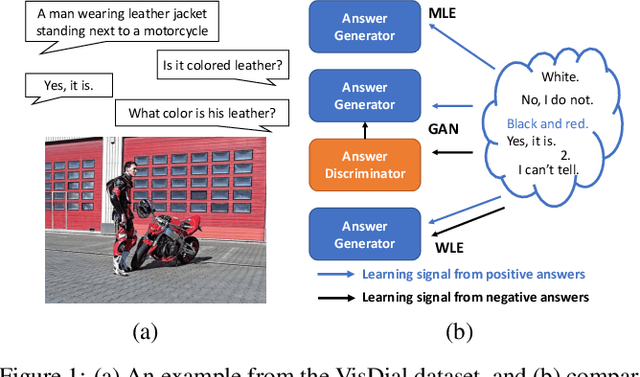
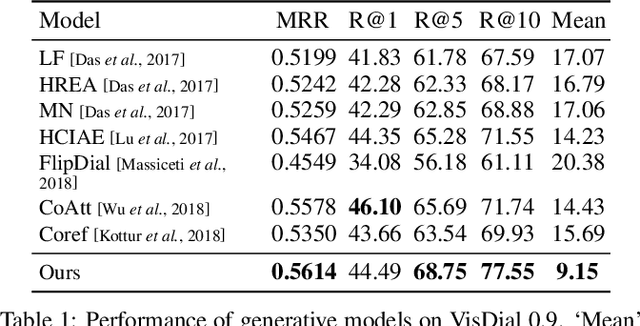
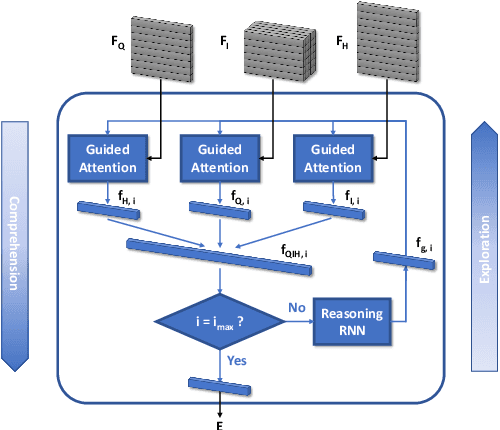
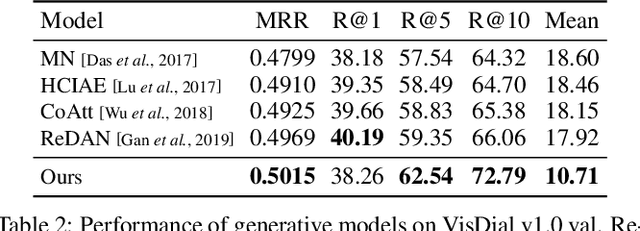
Abstract:The key challenge of generative Visual Dialogue (VD) systems is to respond to human queries with informative answers in natural and contiguous conversation flow. Traditional Maximum Likelihood Estimation (MLE)-based methods only learn from positive responses but ignore the negative responses, and consequently tend to yield safe or generic responses. To address this issue, we propose a novel training scheme in conjunction with weighted likelihood estimation (WLE) method. Furthermore, an adaptive multi-modal reasoning module is designed, to accommodate various dialogue scenarios automatically and select relevant information accordingly. The experimental results on the VisDial benchmark demonstrate the superiority of our proposed algorithm over other state-of-the-art approaches, with an improvement of 5.81% on recall@10.
Boundary-sensitive Network for Portrait Segmentation
Apr 09, 2018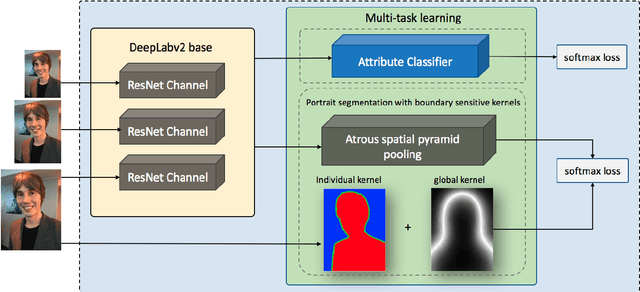



Abstract:Compared to the general semantic segmentation problem, portrait segmentation has higher precision requirement on boundary area. However, this problem has not been well studied in previous works. In this paper, we propose a boundary-sensitive deep neural network (BSN) for portrait segmentation. BSN introduces three novel techniques. First, an individual boundary-sensitive kernel is proposed by dilating the contour line and assigning the boundary pixels with multi-class labels. Second, a global boundary-sensitive kernel is employed as a position sensitive prior to further constrain the overall shape of the segmentation map. Third, we train a boundary-sensitive attribute classifier jointly with the segmentation network to reinforce the network with semantic boundary shape information. We have evaluated BSN on the current largest public portrait segmentation dataset, i.e, the PFCN dataset, as well as the portrait images collected from other three popular image segmentation datasets: COCO, COCO-Stuff, and PASCAL VOC. Our method achieves the superior quantitative and qualitative performance over state-of-the-arts on all the datasets, especially on the boundary area.
dMath: Distributed Linear Algebra for DL
Nov 19, 2016
Abstract:The paper presents a parallel math library, dMath, that demonstrates leading scaling when using intranode, internode, and hybrid-parallelism for deep learning (DL). dMath provides easy-to-use distributed primitives and a variety of domain-specific algorithms including matrix multiplication, convolutions, and others allowing for rapid development of scalable applications like deep neural networks (DNNs). Persistent data stored in GPU memory and advanced memory management techniques avoid costly transfers between host and device. dMath delivers performance, portability, and productivity to its specific domain of support.
 Add to Chrome
Add to Chrome Add to Firefox
Add to Firefox Add to Edge
Add to Edge